
By Nathan Maddock, Communications Officer, Bushfire and Natural Hazards CRC
This year’s AFAC and Bushfire and Natural Hazards CRC conference was one of the best yet. Top quality keynotes speakers and sessions were accompanied by award presentations that recognised leaders in the industry.
Nearly 1100 emergency services representatives and researchers converged on Wellington, New Zealand in early September for the annual Australasian Fire and Emergency Services Authorities Council (AFAC) and Bushfire and Natural Hazards Cooperative Research Centre conference. The conference is the leading knowledge-sharing event for fire, land management and emergency services, with delegates attending from across Australia and New Zealand, as well as the US, UK, Korea and many Pacific Islands.

The trade show was a popular aspect of the conference.
The theme for the conference was ‘After Disaster Strikes – Learning from Adversity’. Unfortunately there is no shortage of disasters to learn from. Last summer, Australia experienced some of its most extreme heatwaves. New Zealand is still coping with the devastating Canterbury earthquakes, while several Pacific neighbours are still recovering from cyclones and tsunami.
Natural and man-made disasters strike all countries, but particularly in our region, said AFAC CEO Stuart Ellis.
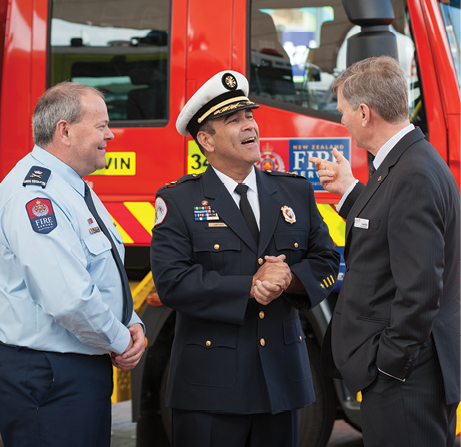
National Commander of the New Zealand Fire Service Paul Baxter, Chief of the Chicago Fire Department Jose Santiago, and AFAC CEO Stuart Ellis share a laugh.
‘The conference was designed to bring together and share the combined wisdom of experience, research and analysis from across the sector to enable a deeper understanding of the approaches needed to secure the region’s future and prosperity,’ he said.
Bushfire and Natural Hazards CRC CEO, Dr Richard Thornton, said the conference showed why research and innovation are more important now than ever.
‘The week was a great opportunity for all emergency management practitioners to learn what we are discovering about the biggest challenges in emergency management across Australasia, especially learning from New Zealand’s Canterbury earthquake experience, and finding ways to use this knowledge every day to make our communities safer,’ Dr Thornton said.
This year’s conference saw the Bushfire and Natural Hazards CRC partner with AFAC for the conference, taking over from its predecessor the Bushfire CRC. The research of the CRC was on show all week, but kicking off the conference on day one was the sold out Research Forum. The Forum showed why research and innovation are vital precursors for safer communities and better environmental management. Latest research by 31 researchers from universities and agencies across Australia, New Zealand and the US covered severe weather, community safety, heatwaves, flood risk, the economics of natural hazards, infrastructure planning, fire modelling, and volunteer management.
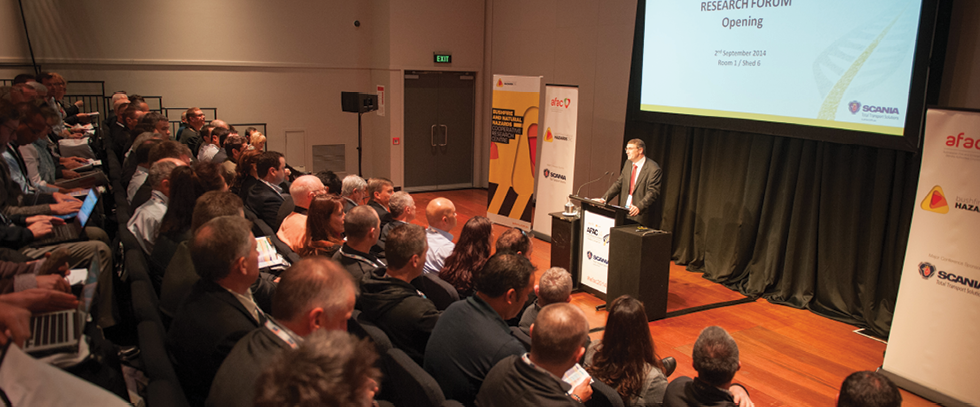
BNHCRC CEO Richard Thornton opened the Research Forum.
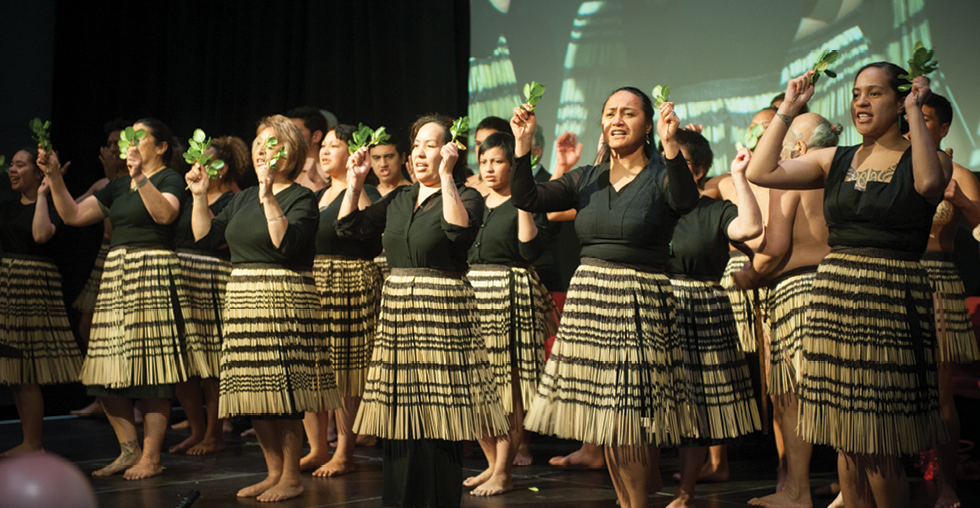
A traditional Māori põwhiri opened the conference.
Several awards were presented to industry personnel during the conference opening. The Laurie Lavelle Awards, acknowledging significant contribution to the knowledge or skills, operations, performance or public profile of the emergency services sector, was jointly presented to Anthony Clark of the New South Wales Rural Fire Service and Mark Wright from the Tasmania SES. The Motorola Knowledge Innovation Awards, recognising innovation, creativity and contribution to the advancement of knowledge management, were taken out by the New Zealand Fire Service and the Country Fire Authority, with an individual award presented to Richard Host from Fire and Rescue New South Wales. Poster awards, sponsored by Dräger, were also presented. The judge’s award went to Lisa Langer and Mary Hart of Scion Research, while the People’s Choice award was taken out by Fire and Rescue NSW Samantha Colwell. A special award was presented to outgoing Bushfire CRC CEO Gary Morgan for his contribution to establishing the national science and research program for bushfires and natural hazards.
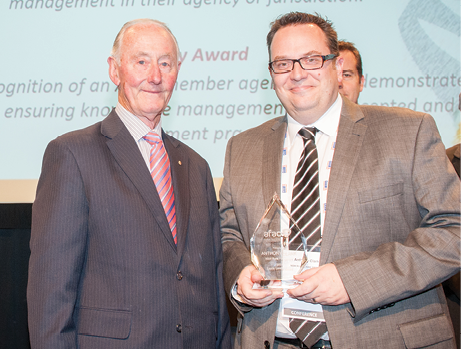
Laurie Lavelle (left) presenting the award named in his honour to Anthony Clark of the NSW RFS.

Gary Morgan of the Bushfire CRC (left) receives his special recognition award from the BNHCRC’s Richard Thornton.
The week also featured four Professional Development Programs covering: an introduction to emergency management for those new to the sector; the Australasian Inter-agency Incident Management System; a mission command masterclass; and how to navigate emergency intelligence feeds. Four field study tours took place, with participants visiting Christchurch to see the earthquake recovery firsthand, touring New Zealand’s Crisis Management Centre in Wellington, exploring the Fraser Trucks factory, and learning about the fuel types, typography and fire risks in the upper South Island.
Speaker audio recordings, abstracts, papers, presentations and research posters can be downloaded from www.afac.com.au/events/proceedings.
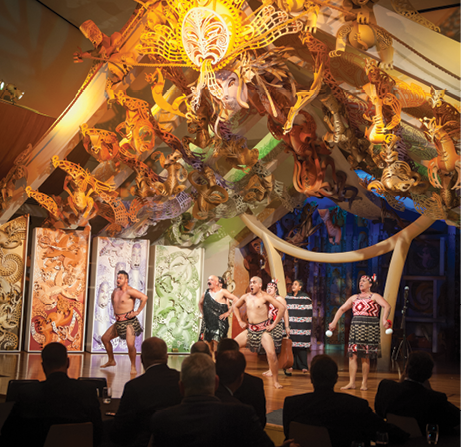
Dinner entertainment by Wellington cultural group Nga Taonga Mai Tawhiti.
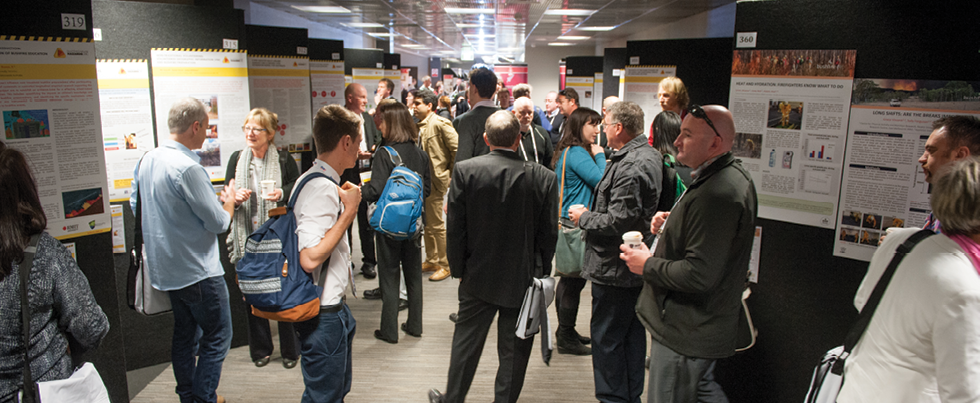
The poster exhibition is a vital part of the conference.
All photos by AFAC and BNHCRC.